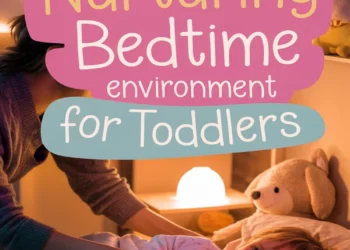If your child shows resistance to napping and has increased energy during nap time, it might be time to think about moving away from naps. Check if they’re staying alert during quiet periods or having challenging bedtimes. Aim for a consistent sleep schedule aligning with their age and activity level. Gradually limit nap duration and introduce quiet time activities instead. Understanding their unique needs can create a smoother adjustment period, and you can explore more strategies to ease this shift.
Signs That Your Child Is Ready to Give up Naps
As your child grows, you might notice signs indicating they’re ready to move away from naptime. They may resist napping altogether, expressing more energy and alertness during the designated nap period. You might also find that bedtime becomes more challenging, as they’re not tired enough to sleep. Another telltale sign is their ability to stay awake during quiet time or engage in activities without showing signs of fatigue. If your child’s mood stays stable and energetic throughout the day without needing a nap, it’s likely they’re ready to shift. Keep in mind that each child is unique, so observe their behavior closely and consider these signs to determine the right time for this change.
Assessing Your Child’s Sleep Needs
While moving away from naptime can be a significant change for both you and your child, it’s crucial to assess their overall sleep needs to verify they’re rested and healthy. Consider factors like your child’s age, activity level, and mood throughout the day. Younger children typically need more sleep, ranging from 11 to 14 hours, while older kids might need 10 to 12 hours. Monitor how your child behaves during the afternoon; if they’re tired, cranky, or struggling to focus, they may still need a nap. It’s vital to observe patterns and adjust bedtimes as needed, especially when eliminating naps. Keeping a consistent sleep schedule can help guarantee your child stays refreshed and ready for their daily adventures.
Recommended Items
Explore these helpful products and tools to make the transition out of naptime easier for your family!
The Impact of Naptime on Nighttime Sleep
Naptime can play a pivotal role in influencing your child’s nighttime sleep patterns. If your child naps too late in the day or for too long, it can interfere with their ability to fall asleep at night. Research shows that naps help young children recharge, but excessive daytime sleep can lead to difficulty settling down later. Look for signs of late-afternoon drowsiness; if you notice them struggling to sleep at night, it might be time to adjust their naptime. Aim for a balance—shorter, earlier naps can promote better nighttime rest. Each child’s sleep needs are different, so stay attuned to their responses and make adjustments that best support their overall sleep health.
Step-by-Step Guide to Transitioning from Naptime
Gradual Transitioning Strategies
Shifting away from naptime can feel intimidating, especially when your child relies on those afternoon snoozes for a boost in energy. However, gradual changes can make this process smoother. Here are three strategies to help you:
- Limit Nap Duration: Gradually shorten the length of nap time—start with 30-minute reductions until your child adjusts.
- Adjust Bedtime: As naps shorten, consider moving bedtime earlier to guarantee your child still gets adequate sleep.
- Introduce Quiet Time: Replace naptime with a quiet period, allowing your child to engage in calming activities like reading or drawing, fostering relaxation without the need for sleep.
Implementing these strategies can ease the adjustments while honoring your child’s need for rest and stability.
Alternative Rest Periods: Quiet Time Activities
Finding alternatives to naptime can help maintain a peaceful routine while allowing your child to rest and recharge. Consider introducing quiet time activities that promote relaxation and focus without requiring sleep. Options like looking at picture books, listening to calming music, or engaging in simple puzzles can be effective. You might also have them color or practice quiet breathing exercises. Research shows these activities can aid in emotional regulation and foster independence. Establish a designated quiet area where your child feels comfortable and secure. Set clear expectations for this time, ensuring it feels special rather than a punishment. With consistency, you’ll help your child learn the importance of downtime, making the shift smoother for everyone involved.
Adjusting Daily Routines Without Naptime
While it may feel challenging to adjust daily routines without naptime, embracing this change can lead to a more adaptable schedule for your child. Here are three practical steps to help with the adjustment:
- Modify Sleep Schedules: Gradually shift bedtime earlier or later to accommodate your child’s new rhythm, ensuring they get enough restorative sleep at night.
- Incorporate Quiet Activities: Replace naptime with calming activities like reading, drawing, or quiet play, allowing your child to rest while still engaging their minds.
- Plan Outings Wisely: Schedule energetic activities in the morning and quieter activities in the afternoon to match your child’s energy levels throughout the day.
Tips for Handling Resistance to the Change
Adjusting to a daily routine without naptime can prompt some strong reactions from your child. It’s common for kids to resist change, feeling uncertain about the new schedule. Here are some tips to ease the adjustment:
| Tip | Explanation | Benefits |
|---|---|---|
| Maintain Consistency | Stick to a routine for wake-up and bedtime. | Creates stability and trust. |
| Offer Choices | Let your child choose quiet time activities. | Promotes independence. |
| Use Positive Reinforcement | Praise your child for adjusting well. | Encourages good behavior. |
| Create a New Routine | Introduce alternative restful activities. | Keeps them engaged. |
| Be Patient | Understand that adaptation takes time. | Reduces stress for both. |
When to Reassess the Decision to Transition
As your child navigates life without naptime, it’s important to monitor their emotional and physical well-being to determine if the change is truly beneficial. Reassessing the decision to move should happen when:
- Mood Fluctuations: If you notice increased irritability or emotional outbursts, it may signal your child isn’t ready to let go of naps.
- Restorative Sleep: Keep an eye on their nighttime sleep. If they’re struggling to fall asleep or developing nighttime awakenings, naptime might still be necessary.
- Cognitive Performance: Pay attention to their focus and energy levels during the day. If they seem unfocused or overly tired, it could indicate the move was premature.
Listening to these signs will help ascertain your child’s well-being and successful adjustment to no naptime.













